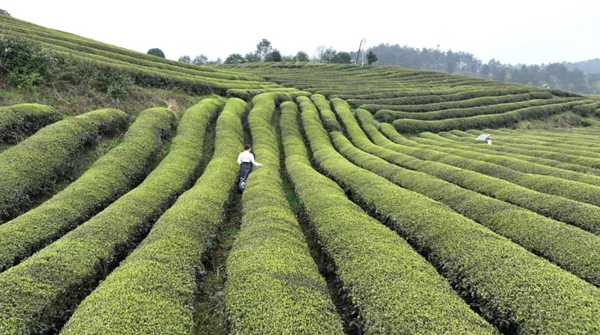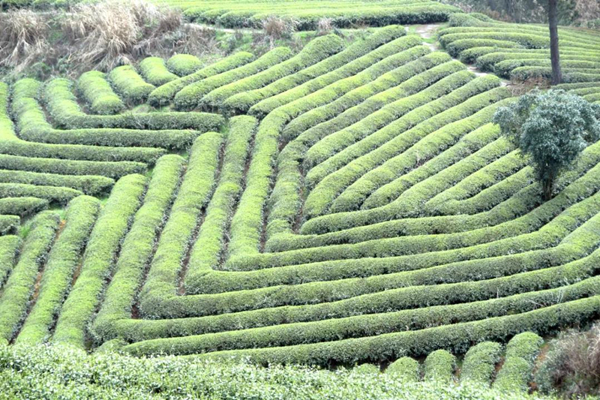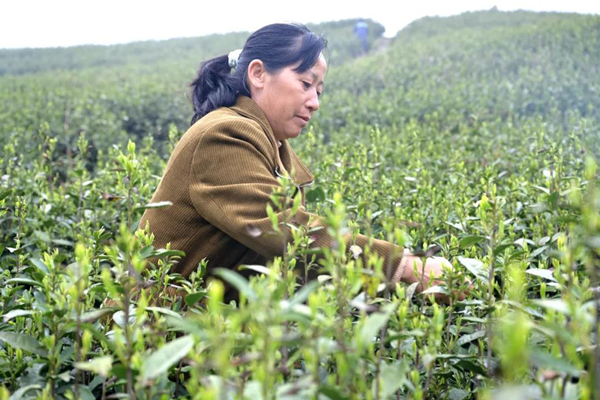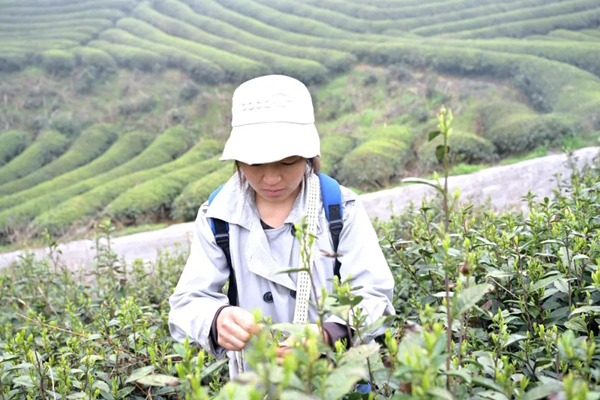Busy tea picking season begins in Kaiyang
The golden period for spring tea picking recently began at the selenium rich ecological tea gardens in Kaiyang county, Guiyang, capital of Southwest China's Guizhou province. Dozens of tea pickers shuttle between the rows of tea, busy picking tender and fresh tea leaves from within the 170,000 mu (11,333.33 hectares) area.

The tea garden. [Photo/WeChat account of Kaiyang county]
"Every spring, we come here to pick tea, and we can earn some money every day. Being close to home, we also can take care of our children and the elderly," said Huang Guishu, a resident of Bazi village in Longgang town. She comes to the tea gardens every year and picks until July or August, earning over 10,000 yuan ($1,380.53) in work income per year.

The tea garden. [Photo/WeChat account of Kaiyang county]
In recent years, based on its ecological advantages and rich selenium resources, Kaiyang has made tea planting one of the leading industries for rural vitalization and developed a characteristic and efficient agricultural industry in mountainous areas.

A villager picks tea leaves. [Photo/WeChat account of Kaiyang county]
At present, the county is home to 70 tea business entities and has built 170,300-mu tea bases, with an annual output of about 11,000 metric tons of raw tea. Furthermore, the county has built five tea towns, including Nanlong, Longgang, and Gaozhai, and 15 tea villages.

A villager picks tea leaves. [Photo/WeChat account of Kaiyang county]
Presented by China Daily.
黔ICP备05001922号-3
